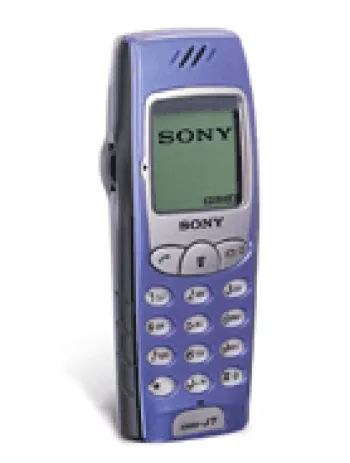
Overview of Sony CMD J7
Released in the fourth quarter of 2001, the Sony CMD J7 was one of the significant mobile phone models from Sony during the early 2000s. As a feature phone, the CMD J7 showcased functionality that catered to basic communication needs. Although overshadowed by more advanced mobile technology today, the device exemplified the technological capabilities and design philosophy of its time.
Design and Build
The Sony CMD J7 features a compact and lightweight design, making it portable and easy to carry around. With dimensions of 113 x 44 x 21 mm and a weight of just 92 grams, it was ergonomically suited for one-handed use. The choice of a Mini-SIM ensured wide compatibility with GSM networks, suitable for international travelers during its release era. The build quality reflects Sony's commitment to durable devices, prevalent during the period.
Display
The device is equipped with a grayscale graphic display that supports four shades, emphasizing simplicity in display features. While the lack of color might seem like a limitation today, the 96 x 92 pixel resolution provided clear and sufficient display for essential phone functionalities. The screen facilitated readability with its 6-line display, which was considered adequate for viewing text messages and basic menu navigation.
Network and Connectivity
Designed to operate on GSM technology, the Sony CMD J7 supported the 900 and 1800 frequency bands, which were widely adopted by telecommunication networks globally. However, it's essential to note that features such as GPRS or EDGE were not present, which limited the device to basic voice and SMS capabilities without internet connectivity, highlighting the focus on essential communication rather than data services.
Battery Life
One of the standout features of the CMD J7 was its battery life. With a removable Li-Ion battery rated at 650mAh, the phone could withstand prolonged usage. The battery life was notably efficient with a standby time of up to 200 hours and a talk time ranging between 3 hours and 20 minutes to 6 hours, depending on usage conditions. This battery performance was advantageous for users in areas with limited charging options.
Memory and Storage
The CMD J7 featured an internal memory system typical of feature phones of its time. It did not include a card slot for expandable storage, which aligns with the device's function as a basic communication tool. The phonebook capacity allowed storage of up to 500 contacts, which was considered generous at the time. Additionally, the ability to keep records of the last 10 dialed, received, and missed calls offered users basic call tracking capabilities.
Sound and Alerts
For sound and alerts, the Sony CMD J7 came equipped with a loudspeaker and supported downloadable polyphonic ringtones, a notable feature when customization was limited to monophonic tones in many other devices. However, it lacked a 3.5mm headphone jack, limiting options for private listening or using the phone as a music player, which was more common in later mobile phones.
Communication Features
The CMD J7, despite lacking modern connectivity features like WLAN and Bluetooth, supported SMS and basic email messaging. The phone's browser could access WAP and HTML (MS) pages, providing rudimentary browsing capabilities for urgent or essential information retrieval. The inclusion of basic organizer tools like a clock, alarm, and games offered users utility beyond just communication but stayed limited without advanced apps or functionalities.
Other Features
The device was designed without modern sensors or GPS functionalities. However, it compensated with traditional mobile phone features, making it user-friendly for individuals seeking straightforward, non-distracting devices. While Java applications were not supported, users could engage with basic pre-installed games for entertainment.
Market Impact
Upon its release, the Sony CMD J7 catered to users who prioritized reliability and ease of use over the latest technology trends. Its market impact was modest, appealing primarily to those seeking a durable and easy-to-navigate feature phone. It also carved a niche within the segment of consumers who valued battery life and basic communication capabilities in an era where not everyone had fully transitioned to smartphones.
Discontinuation and Legacy
The Sony CMD J7 was eventually discontinued as mobile technology rapidly advanced, and consumer expectations shifted towards devices with more features and smartphone capabilities. Despite its discontinuation, it remains a part of early mobile phone history and reflects Sony's evolving design ethos during the early 2000s. For collectors and technology enthusiasts, the CMD J7 symbolizes a time when mobile communication shifted from basic telephony to the multifunctional devices we know today.
Key Features of Sony CMD J7
- Compact dimensions: 113 x 44 x 21 mm and light weight at 92 g
- GSM technology with support for GSM 900 / 1800 bands
- Grayscale graphic display with 4 shades and resolution of 96 x 92 pixels
- Large phonebook capacity with storage for up to 500 contacts
- Support for SMS and Email messaging
- Downloadable polyphonic ringtones
- Removable Li-Ion battery with stand-by time up to 200 hours and talk time of 3 h 20 min to 6 h
- Includes basic features like Clock, Alarm, and Games
Disadvantages of Sony CMD J7
- Lacks GPRS and EDGE support for mobile internet connectivity.
- Outdated display technology with a grayscale graphic and only 4 shades.
- No memory card slot for expandable storage.
- Limited call records, allowing only 10 dialed, 10 received, and 10 missed calls.
- Absence of a camera feature.
- No 3.5mm headphone jack.
- Does not support WLAN, Bluetooth, or radio features.
- Does not provide GPS positioning capabilities.
- Lacks USB connectivity options.
- Does not support Java for additional applications and games.
- The product is discontinued, leading to potential difficulties in finding support and accessories.
View Also
More Phones
All Rights Reserved +14266 Phones © Mobilawy 2025

























